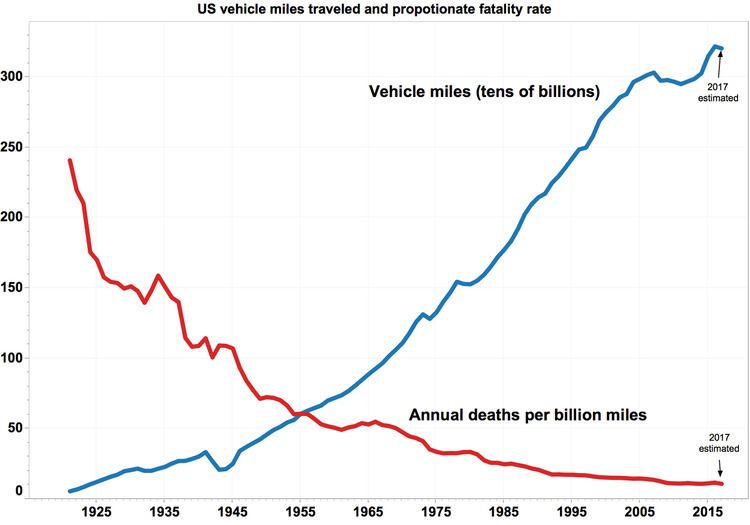 | ||
Worldwide it was estimated that 1.25 million people were killed and many millions more were injured in motor vehicle collisions in 2013. This makes motor vehicle collisions the leading cause of death among young adults of 15-29 years of age (360,000 die a year) and the ninth cause of death for all ages worldwide. In the United States, 32,675 people died and 2.3 million were injured in crashes in 2014. It is estimated that motor vehicle collisions caused the deaths of around 60 million people during the 20th century, around the same as the number of World War II casualties.
Contents
Modern crash statistics often focus on reportable injury crashes (which include deaths) rather than reporting on deaths alone. It is believed that serious crashes are often significantly under-reported, under-recorded and misclassified and that the completeness of reporting may vary over time and between sources.
Trends
Road toll figures in developed nations show that car collision fatalities have declined since 1980. Japan is an extreme example, with road deaths decreasing to 5,115 in 2008, which is 25% of the 1970 rate per capita and 17% of the 1970 rate per vehicle distance travelled. In 2008, for the first time, more pedestrians than vehicle occupants were killed in Japan by cars. Besides improving general road conditions like lighting and separated walkways, Japan has been installing intelligent transportation system technology such as stalled-car monitors to avoid crashes.
In developing nations, statistics may be grossly inaccurate or hard to get. Some nations have not significantly reduced the total death rate, which stands at 12,000 in Thailand in 2007, for example.
In the United States, twenty-eight states had reductions in the number of automobile crash fatalities between 2005 and 2006. 55% of vehicle occupants 16 years or older in 2006 were not using seat belts when they crashed.
Road fatality trends tend to follow Smeed's law, an empirical schema that correlates increased fatality rates per capita with traffic congestion.
Proportion of deaths by type of impact
Crashes are categorized by what is struck and the direction of impact, or impacts. These are some common crash types, based on the total number that occurred in the U.S.A. in 2005, the percentage of total crashes, and the percentage of fatal crashes:
Rollover, head-on, pedestrian, and bicyclist crashes combined are only 6.1% of all crashes, but cause 34.5% of traffic-related fatalities.
Sometimes the vehicles in the collision can suffer more than one type of impact, such as during a shunt or high-speed spin. This is called a "second harmful event," such as when a vehicle is redirected by the first crash into another vehicle or fixed object.
